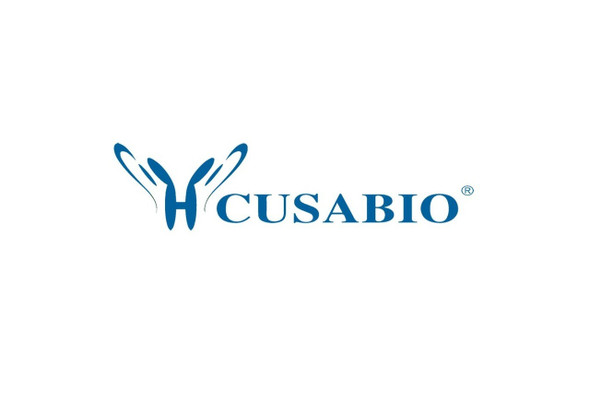Cusabio Rattus norvegicus Recombinants
Recombinant Rat Major prion protein (Prnp) | CSB-EP018739RA
- SKU:
- CSB-EP018739RA
- Availability:
- 3 - 7 Working Days
Description
Recombinant Rat Major prion protein (Prnp) | CSB-EP018739RA | Cusabio
Alternative Name(s): CD230
Gene Names: Prnp
Research Areas: Others
Organism: Rattus norvegicus (Rat)
AA Sequence: GGWNTGGSRYPGQGSPGGNRYPPQSGGTWGQPHGGGWGQPHGGGWGQPHGGGWGQPHGGGWSQGGGTHNQWNKPSKPKTNLKHVAGAAAAGAVVGGLGGYMLGSAMSRPMLHFGNDWEDRYYRENMYRYPNQVYYRPVDQYSNQNNFVHDCVNITIKQHTVTTTTKGENFTETDVKMMERVVEQMCVTQYQKESQAYYDGRRS
Source: E.coli
Tag Info: N-terminal 6xHis-tagged
Expression Region: 29-231aa
Sequence Info: Full Length of Mature Protein
MW: 26.3 kDa
Purity: Greater than 90% as determined by SDS-PAGE.
Relevance: May play a role in neuronal development and synaptic plasticity. May be required for neuronal myelin sheath maintenance. May play a role in iron uptake and iron homeostasis. Soluble oligomers are toxic to cultured neuroblastoma cells and induce apoptosis (in vitro). Association with GPC1 (via its heparan sulfate chains) targets PRNP to lipid rafts. Also provides Cu2+ or ZN2+ for the ascorbate-mediated GPC1 deaminase degradation of its heparan sulfate side chains .
Reference: Three-exon structure of the gene encoding the rat prion protein and its expression in tissues.Saeki K., Matsumoto Y., Hirota Y., Matsumoto Y., Onodera T.Virus Genes 12:15-20(1996)
Storage: The shelf life is related to many factors, storage state, buffer ingredients, storage temperature and the stability of the protein itself. Generally, the shelf life of liquid form is 6 months at -20?/-80?. The shelf life of lyophilized form is 12 months at -20?/-80?.
Notes: Repeated freezing and thawing is not recommended. Store working aliquots at 4? for up to one week.
Function: Its primary physiological function is unclear. May play a role in neuronal development and synaptic plasticity. May be required for neuronal myelin sheath maintenance. May promote myelin homeostasis through acting as a agonist for ADGRG6 receptor. May play a role in iron uptake and iron homeostasis. Soluble oligomers are toxic to cultured neuroblastoma cells and induce apoptosis (in vitro) (By similarity). Association with GPC1 (via its heparan sulfate chains) targets PRNP to lipid rafts. Also provides Cu(2+) or ZN(2+) for the ascorbate-mediated GPC1 deaminase degradation of its heparan sulfate side chains (By similarity).
Involvement in disease: Found in high quantity in the brain of humans and animals infected with degenerative neurological diseases such as kuru, Creutzfeldt-Jakob disease (CJD), Gerstmann-Straussler syndrome (GSS), scrapie, bovine spongiform encephalopathy (BSE), transmissible mink encephalopathy (TME), etc.
Subcellular Location: Cell membrane, Lipid-anchor, GPI-anchor, Golgi apparatus
Protein Families: Prion family
Tissue Specificity:
Paythway:
Form: Liquid or Lyophilized powder
Buffer: If the delivery form is liquid, the default storage buffer is Tris/PBS-based buffer, 5%-50% glycerol. If the delivery form is lyophilized powder, the buffer before lyophilization is Tris/PBS-based buffer, 6% Trehalose, pH 8.0.
Reconstitution: We recommend that this vial be briefly centrifuged prior to opening to bring the contents to the bottom. Please reconstitute protein in deionized sterile water to a concentration of 0.1-1.0 mg/mL.We recommend to add 5-50% of glycerol (final concentration) and aliquot for long-term storage at -20?/-80?. Our default final concentration of glycerol is 50%. Customers could use it as reference.
Uniprot ID: P13852
HGNC Database Link: N/A
UniGene Database Link: UniGene
KEGG Database Link: KEGG
STRING Database Link: STRING
OMIM Database Link: N/A









